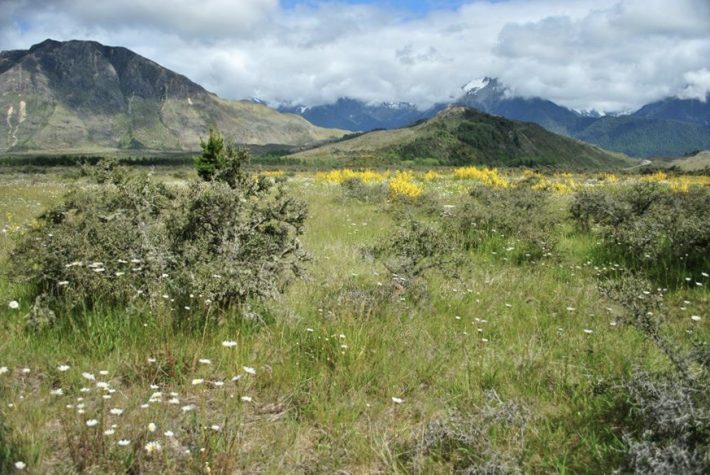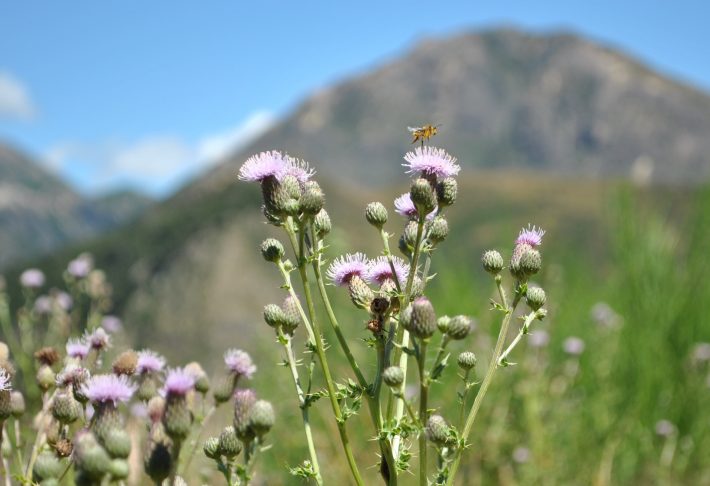The temporal dimension of the ‘alien attack’ in plant-pollinator communities
Integrative Ecology Group, Estación Biológica de Doñana press release.
A new study, published in Journal of Ecology, shows for the first time that both alien plants and alien pollinators influence the organisation of ecological networks over time; yet the causes and consequences for the local communities are widely dependent on the trophic level of the invasion.

Researchers from Estación Biológica de Doñana (Spain), Universidade Estadual Paulista (Brazil) and Montana State University (USA) have examined for the very first time the role of co-occurring alien plants and alien pollinators in shaping the structure of mutualistic networks over a flowering season.
Alien species are those introduced by humans outside their native range for different reasons such as economical purposes, ornamental preferences, and animal trade or even accidentally through the movement of people across the planet. The invasion of alien species is one of the main drivers of global change because it can drastically disrupt ecological processes, such as those involving the pollination services extensively threatened worldwide. Thus, understanding how alien species affect the structure and dynamics of the invaded communities is a major challenge to deal with the biodiversity crisis.
The Network Theory applied to Ecology is an efficient tool used by scientists to unveil how aliens integrate and affect different ecosystems; yet most of the studies up to date are based on static pictures of the communities without considering the temporal dynamics of nature.
“In our study we address the temporal aspects of the alien invasion on pollination networks. Besides, most studies about alien species’ impacts focus on a single trophic level of the invasion, considering either alien plant or alien pollinator species. We fill this gap by accounting for the trophic-level effects of alien species on the seasonal dynamics of native communities”, adds Blanca Arroyo-Correa, an author of the study currently working at Estación Biológica de Doñana.
“Our study system is located in the South Island of New Zealand, which comprehends a subalpine vegetation in which 68% of the sampled plant species and 14% of the pollinator species that visit them are aliens” says Carine Emer, a Brazilian ecologist who sampled the data in New Zealand back in 2013 as part of her PhD at the University of Bristol (UK).

According to the study, alien plant and alien pollinator species play totally opposite roles in structuring the communities in which they occur. For instance, while alien pollinators visited more plant species than the native ones, alien plants received way less visitors than their natives’ neighbours. Moreover, their findings showed that alien species interact more with each other than with native species across the season, forming the so-called ‘invader complex’. The authors propose that this process may have facilitated the spread of alien species in New Zealand and likewise may be seen in other places ‘attacked by aliens’ throughout the planet.
The researchers also found that both alien plants and pollinators increased the diversity of animal-plant interactions through the season, but the results were again trophic-level dependent. Blanca Arroyo-Correa explains: “While alien plants were able to re-arrange who interacts with who, alien pollinators were able to change the identity of mutualistic partners over time”.
“It was amazing to observe the ability of the alien species to switch their partners as the resource changed over the flowering season. Suddenly, native pollinators were gone while the aliens took their place visiting the flowering plants. At the end, aliens played an important role in that ecosystem by linking the temporal networks” – says Carine Emer.
This study greatly contributes to understand how the transition to alien-dominated communities affect the conservation of interactions performed exclusively by native species and hence, the maintenance of the ecosystem functioning. “Our findings suggest that management strategies should pay particular attention to the timescale at which interactions with alien species form and dissolve, and to the consequences and drivers of such seasonal dynamics”, the authors conclude.
You can access the study here:
, , . Alien plants and flower visitors disrupt the seasonal dynamics of mutualistic networks. J Ecol. 2019; 00: 1– 12. https://doi.org/10.1111/1365-2745.13332
Media Contact:
Blanca Arroyo-Correa
Integrative Ecology Group, Estación Biológica de Doñana (EBD-CSIC)
Seville, Spain
Email: blanca.arroyo.correa@gmail.com
Like what we stand for?
Support our mission and help develop the next generation of ecologists by donating to the British Ecological Society.